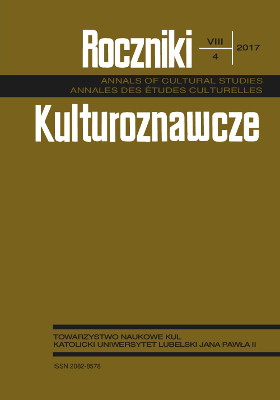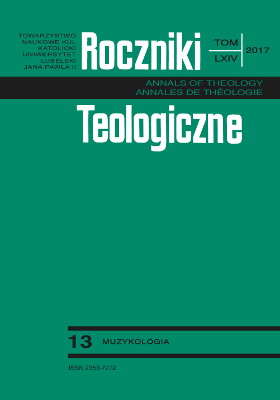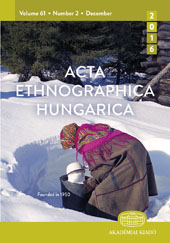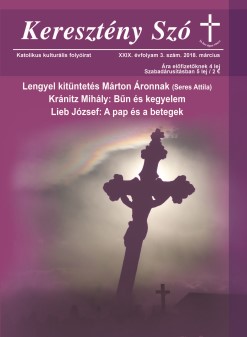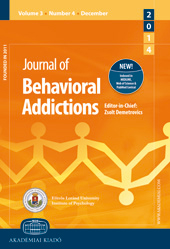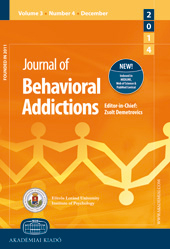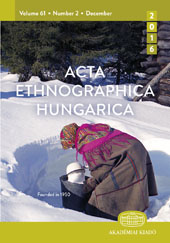Author(s): Olena Ushchapivska / Language(s): Ukrainian
Issue: 2/2014
Despite the difficult political situation, we consider it necessary to continue the studying of sociocultural space of Donbass with the purpose to build a productive communication process between the representatives of Donetsk region and other regions of Ukraine. This article describes the features of orthodox music-making on the territory of Donetsk region in their historical and cultural context. It also provides analysis of the specificity of orthodox music education system and development of a religious festival movement. Orthodox music-making have existed in Donetsk region since the late ХІХ century and was extended through parochial schools, where along with the mastering the basics of literacy, students must have studied also church singing, and if students had ability for music they became a part of singing church choirs or choral student groups. The requirements of the singing program provided preparatory voice exercises, singing of the simplest canons, introduction to the basics of music literacy, part singing skills. In the second half of the nineteenth century in Bakhmut and Mariupol there were boys’ religious schools and choirs which were quite popular among the citizens. They took part not only in religious but also in social events of the towns and, therefore, had both spiritual and secular music pieces in their repertoire. The long break in development of church singing traditions in Donetsk region began in Soviet times, when there was a massive campaign to eradicate religion. With the collapse of the Soviet empire and in connection with the loss of the previous religious tradition began the formation of new forms and methods of religious life. Donetsk region became a territory of intense rechristianization, where return to faith was made under authentic Orthodoxy. There are Sunday schools almost at every Orthodox parish community. They receive great help from graduates of the first Ukrainian subdivision of spiritual culture and ethics, opened at the Donetsk National University at the department of additional and related professions. The school at the Holy Transfiguration Cathedral in Donetsk is one of the best Orthodox Sunday schools, which deals with spirituality formation of the younger generation through music communication. One of the interesting traditions of this school is setting the Christmas and Easter musical performances, where singing alternates with instrumental items performed by pupils. Orthodox communities play important part also in the process of development of professional choral musicmaking in Donetsk region. A problem of creation of professional choirs and learning of choirmasters arose with extreme relevance with the beginning of restoration of Orthodox churches activities. The choirmaster training school was opened in the town of Makiyivka at a convent in honour of the miraculous image of the Kasperovskaya Icon of Mother of God. Since the beginning of the school year 2007–2008 the special children’s choir school "Blagovist" at Donetsk Diocese has begun its activity. Yu. Shandro- Lyubchynska, graduate of Donetsk Musical Academy is the head of this school. For this school there were developed special programs of all subjects based on the experience of its teachers and archive pre-revolutionary programs for Synodal School of Church Singing, which was reorganized into the People’s Choir Academy. The main skills that students shall master in the course of the seven-year study are solo singing, singing in ensemble and choir, piano playing. Students also gain knowledge of God’s law, solfeggio, Church Slavonic, church bells, music literature, history of church music, sacred history, rhetoric. Subjects related to the Orthodox liturgy are studied on an advanced level. Even music literature course is considered through the prism of church music development. Historical heritage of the national church music is maintained by All-Ukrainian Holy Mountain Vocal Festival, which was first held in 2002 in the Monastery of the Holy Dormition in Sviatohirsk. The best chamber choirs of Ukraine are regular participants of the Holy Mountain Vocal Festival. The idea belongs to a composer, winner of the "IBLA Grand Prize" in Italy, winner of awards named after M. Lysenko and S. Prokofiev, honoured Artist of Ukraine Mykhailo Schukh. He has been the artistic director of the festival since its creation. The program of the festival, according to its concept of popularization of spiritual genres and traditions of religious music-making, consists of music of different eras and nations – from the ancient Byzantine, Russian, Georgian chants and music, and Ukrainian Baroque A. Vedel and D. Bortnyansky to the works of M. Lysenko, P. Tchaikovskyi and contemporary composers M. Shukh, V. Stepurko, V. Tymozhynskyi. Since 2004, the Holy Mountain Vocal Festival was held not only in Sviatohirsk and Donetsk, but also in Kyiv.This year the Holy Mountain Vocal Festival is the first of national choral festivals which joined the World Federation of Choral Music IFCM. As a result of cooperation of the author of the Holy Mountain Vocal Festival Mykhailo Schukh with the National Academic Choir "Dumka" the disc with the composer’s new piece "Liturgical doxology" was presented. It was released in the same 2007 at another choral festival – "Golden-Domed Kyiv". One of the most interesting regular activities that significantly affect the development of choral singing in Donetsk region is the Open Orthodox Festival of Children and Youth Creativity "Sparkle of God". For the first time the festival was held in May-November 2005, under the constant Donbas Festival of Slavonic culture and literature. Beginning from the second festival the list of participants included not only amateur groups of secular educational institutions and cultural centres of Donetsk region, but also students of Orthodox Sunday schools. Festival "Sparkle of God" clearly represents the traditions of Orthodox choral a cappella singing, and is also open to various forms of musical creativity. Its regular organization adds its own original features to the regional cultural image. In general, during the independent Ukraine there was built its own system of musical education and created powerful festival movement on the territory of the region, which exceeded the bounds of the region and popularized thereby both local church and secular choirs. We consider these two features (own system of the church musical education and festival movement) exceptional in cultural image of the region. However, perhaps the idea of Slavic unity and importance of so-called "Russian Orthodoxy", which often associated festival events, were among the factors that led to the current tragic situation. We can only hope that the church choirs of Donetsk region will be guided in their future activities by the basic tenets of Christianity as Charity and Love, giving Hope to its audience.
More...
